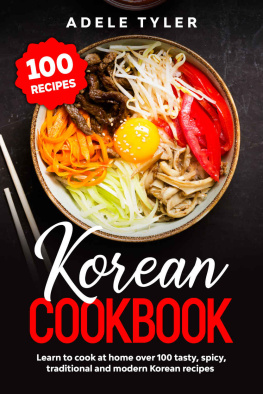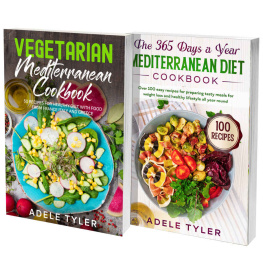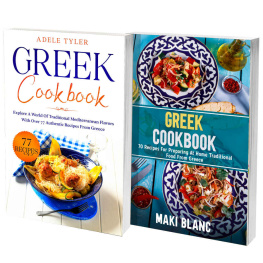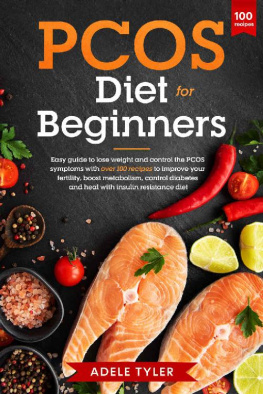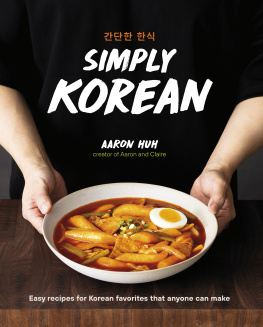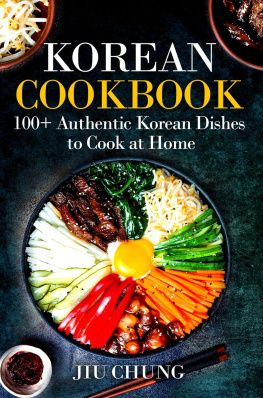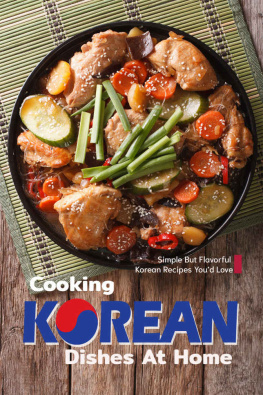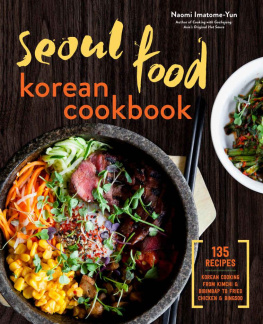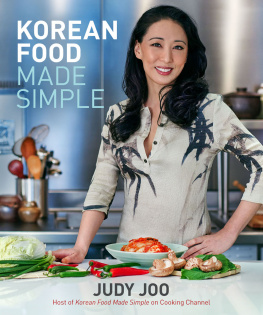Korean Cookbook
Learn to Cook at Home over 100 Tasty, Spicy, Traditional and Modern Korean Recipes
By
Adele Tyler
Copyright 2020 by Adele Tyler - All rights reserved.
This document is geared towards providing exact and reliable information in regards to the topic and issue covered. The publication is sold with the idea that the publisher is not required to render accounting, officially permitted, or otherwise, qualified services. If advice is necessary, legal or professional, a practiced individual in the profession should be ordered.
- From a Declaration of Principles which was accepted and approved equally by a Committee of the American Bar Association and a Committee of Publishers and Associations.
It is not legal in any way to reproduce, duplicate, or transmit any part of this document in either electronic means or in printed format. Recording of this publication is strictly prohibited and any storage of this document is not allowed unless with written permission from the publisher. All rights reserved.
The information provided herein is stated to be truthful and consistent, in that any liability, in terms of inattention or otherwise, by any usage or abuse of any policies, processes, or directions contained within is the solitary and utter responsibility of the recipient reader. Under no circumstances will any legal responsibility or blame be held against the publisher for any reparation, damages, or monetary loss due to the information herein, either directly or indirectly.
Respective authors own all copyrights not held by the publisher.
The information herein is offered for informational purposes solely, and is universal as so. The presentation of the information is without contract or any type of guarantee assurance.
The trademarks that are used are without any consent, and the publication of the trademark is without permission or backing by the trademark owner. All trademarks and brands within this book are for clarifying purposes only and are owned by the owners themselves, not affiliated with this document.
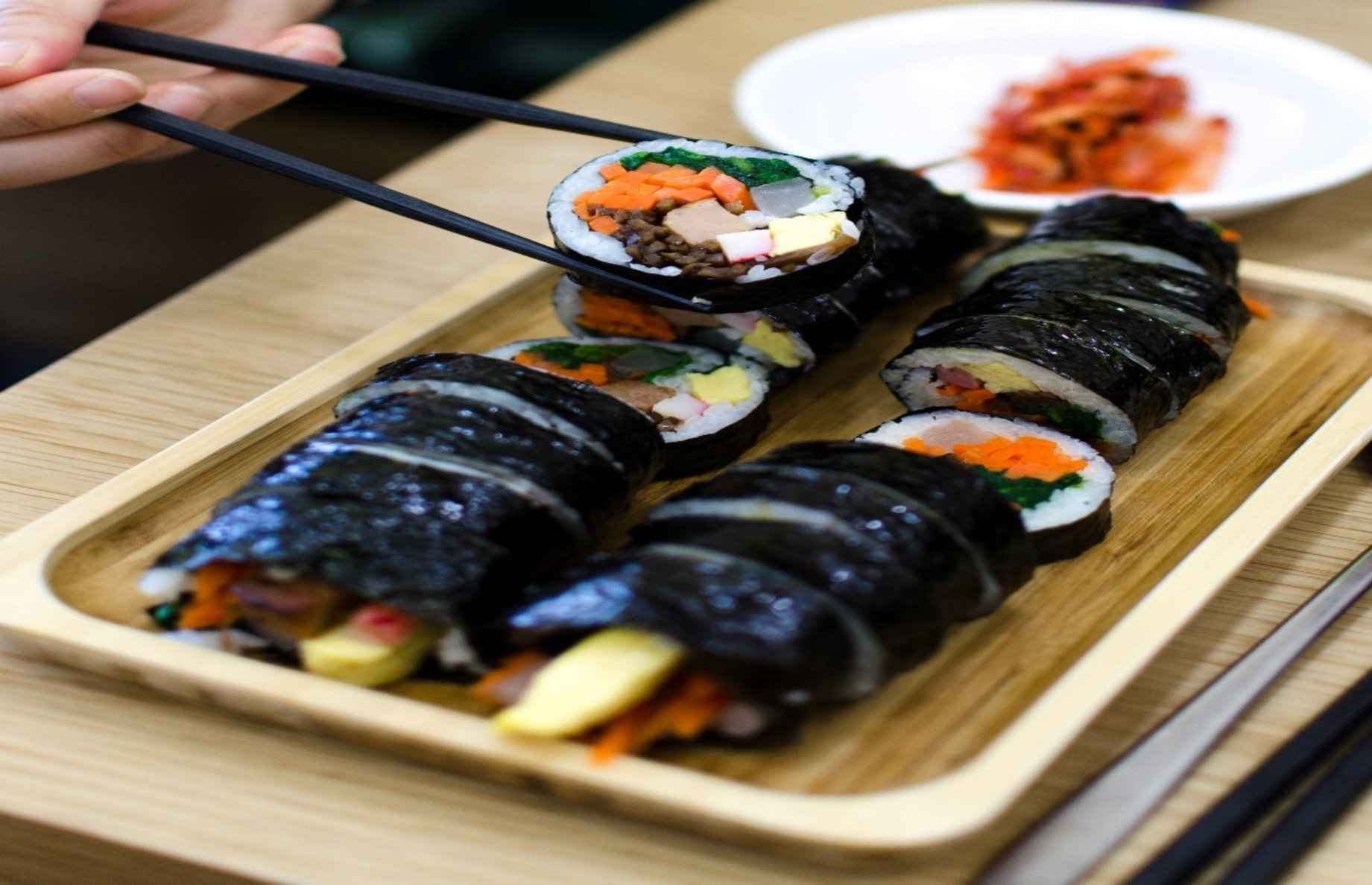
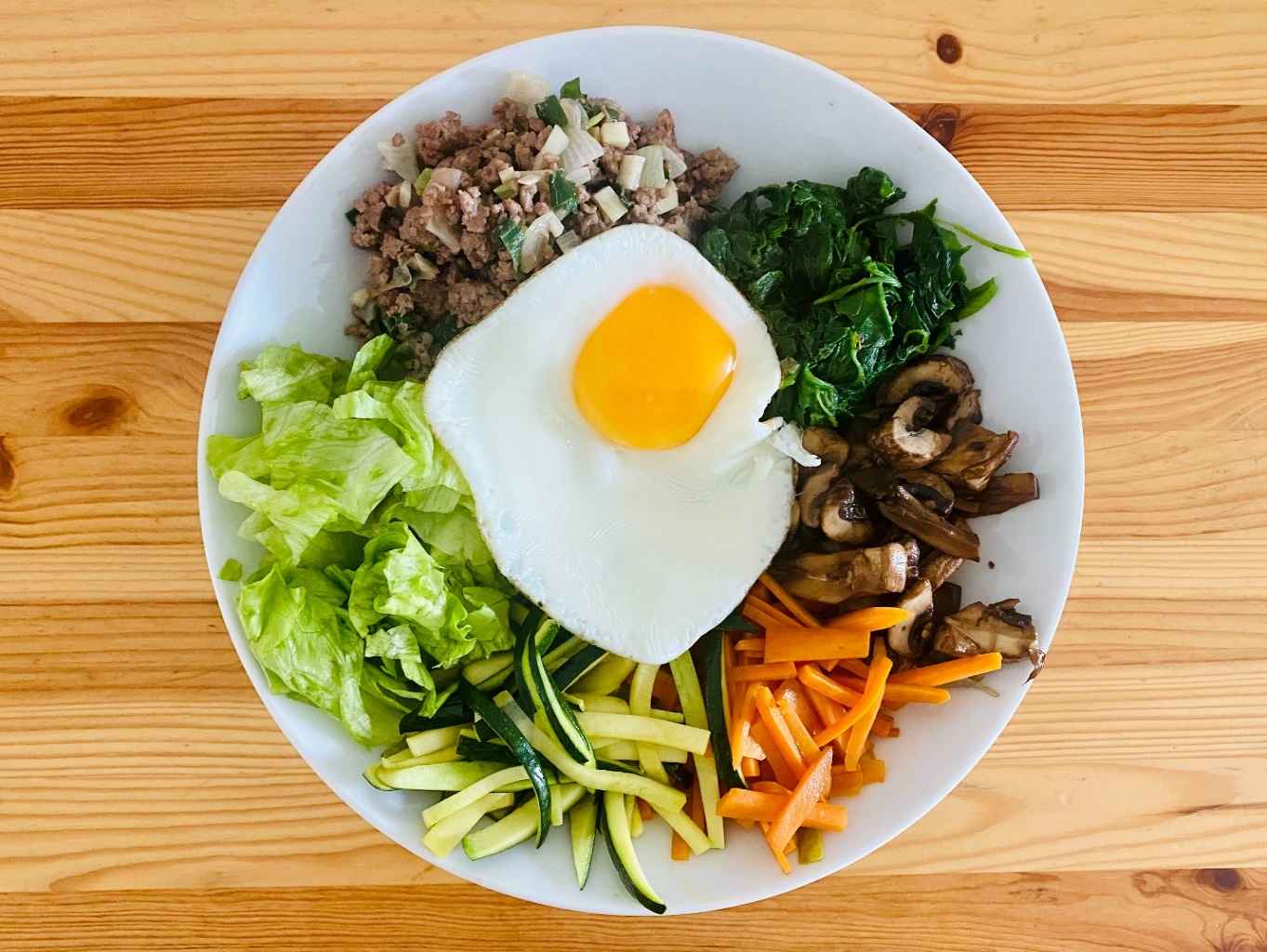
Table of contents

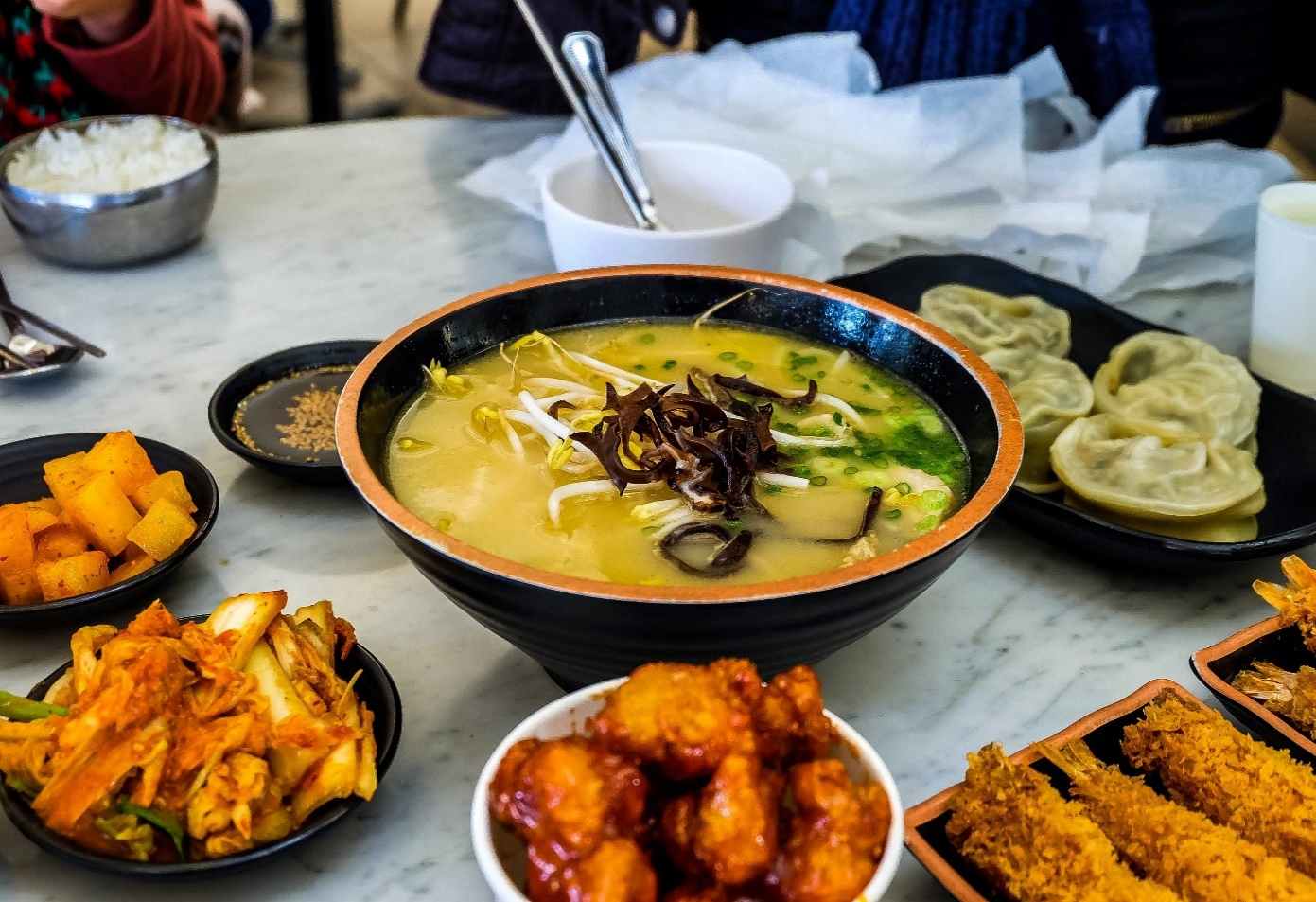
Introduction
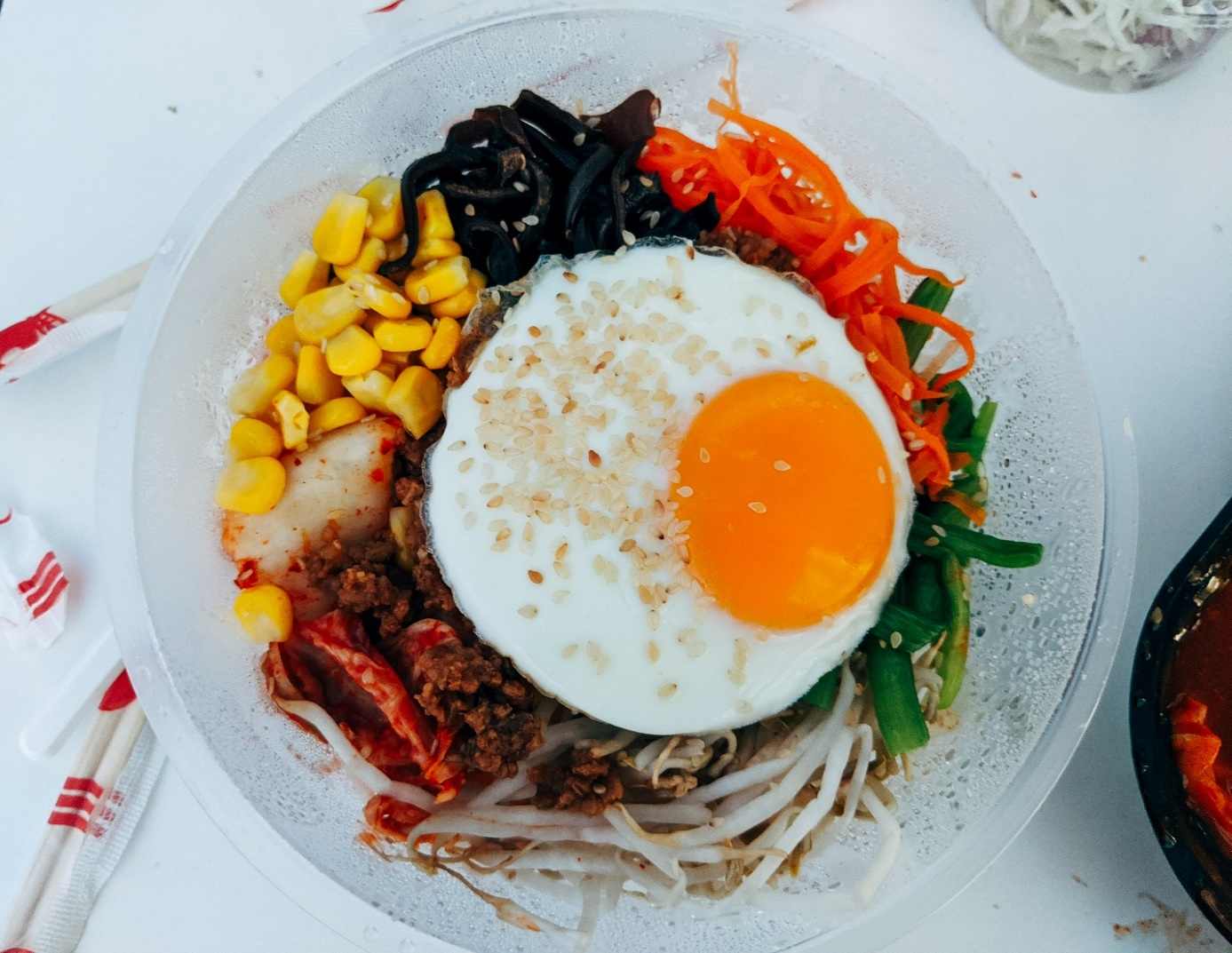
Along with a food culture that is essentially separate from Japanese and Chinese cooking styles, Korea has created specialized foods. Food is one of the key aspects of culture and offers opportunities to disseminate different cultural material. However, an absence of cohesive definitions in Korean cuisine has reduced this effect. Precise interpretations and ideas to be used with regards to the K-diet must, therefore, be established.
Two different ideas are Korean-diet and Korean-food. Although the K-diet idea is being used to portray Korean Traditional cuisine, cooking techniques, and eating choices and trends, K-food is the K-diet food component. Several elements have been introduced to define cuisines, such as commonly eaten foods, prepared food or equipment, innovations or cooking techniques, and the basic principles found in the country's dietary habits. Such opinions place different emphasis on nutrition and diet.
K-food's products consist of vegetables and grains, but fish and shrimps have been used in seas areas. Herbal medicines such as ginger, spring onions, and red pepper have also been used to improve taste and contribute to the beneficial effects of food. In maintaining the food as mentioned above resources, including vegetables, legumes, and fish, Korean fermented technology has played an essential role. Grains, namely rice, and beans have historically been the principal source of starch. Legumes and seafood gave protein. A primary supply of fat was vegetable oils made of soybean or perilla.
The K-diet can be marketed as a healthier alternative as physiological changes caused by over-nutrition are becoming a severe issue. The standard Korean meal structure, which requires individuals to share different meals, would have served an educational function from a cultural perspective in learning common courtesy and manners to be observed when consuming shared meals . While different cooking processes are used in Korean cuisine, fermentation is the most common method that improves both the food's quality and preservation. The K-diet consists of cooked-rice and as well as separate banchan with serving size. At every dinner, kimchi is often eaten.
K-diet has many health benefits for an individual, especially regarding overweight people. This book, "Korean Cookbook," consists of seven chapters with a detailed introduction to Korean cuisine and its health benefits with delicious Korean recipes. Chapters 1 and 2 are about Korean culture, Korean cuisine evolution, and health benefits. Moreover, they also give details about Korean spices and cooking techniques used in Korean restaurants. Chapter 3, 4, and 5 are recipe chapters with appetizers and breakfasts, snacks and lunch, dinner, and dessert recipes. Chapter 6 is about famous Korean dishes, and the last chapter is vegetarian meal recipes. Read this book and give your meals a Korean touch with its unique flavors and cooking methods.
Chapter 1: Origin and Historical Background of the Korean Food
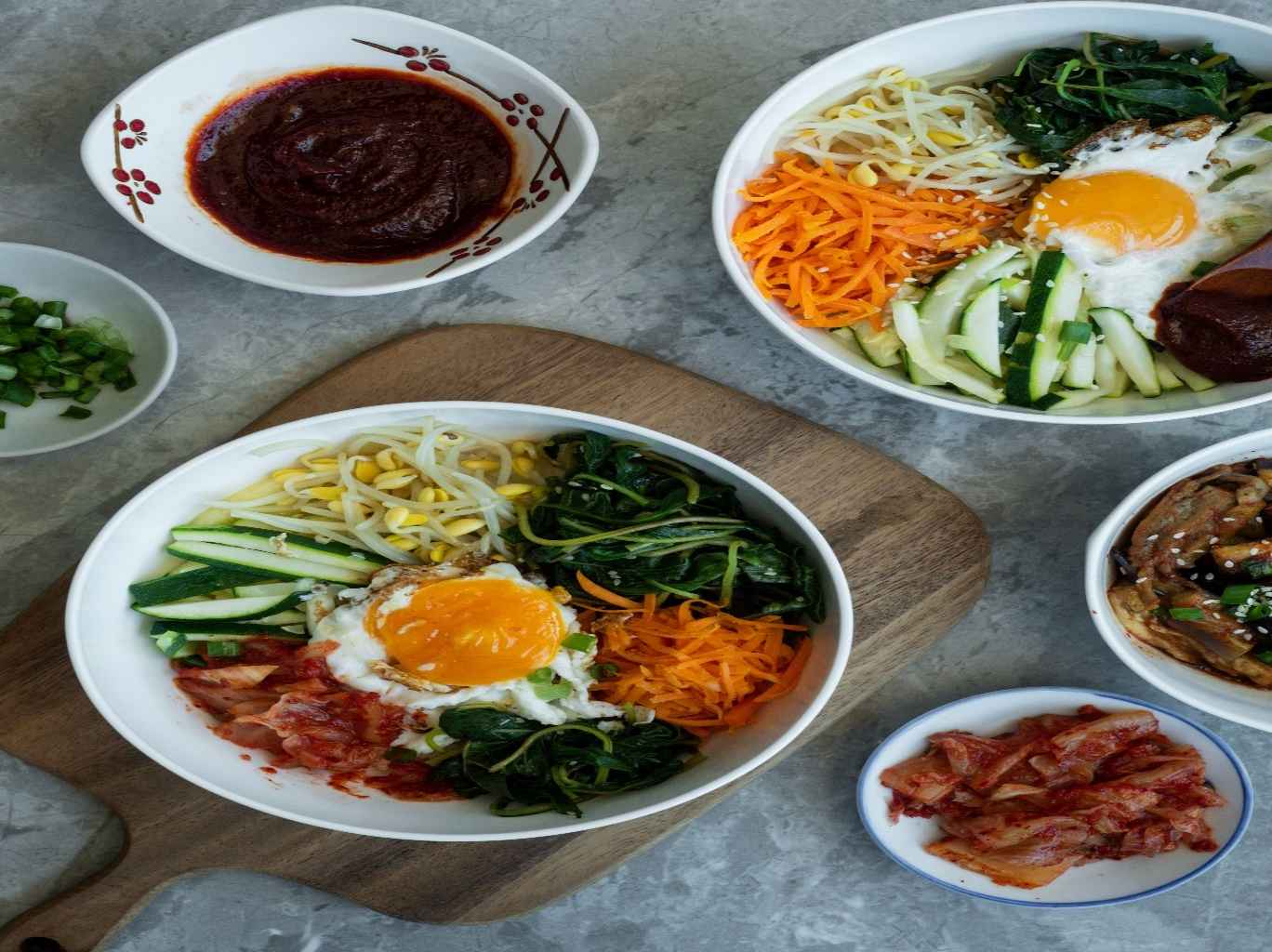
Korea has created specialized foods as well as a local food that is fundamentally different from Chinese or Japanese cooking styles. Food is one of the main elements of culture and provides opportunities for diffusing different cultural materials. However, a lack of precise meanings and concepts in Korean cuisine has undermined its influence. Consistent meanings and terms to be used about the K-diet must therefore be defined . Two different terms are K-diet and K-food. Even though the K-diet term is used to describe traditional Korean cuisine, cooking techniques, and food choices and patterns, K-food is the K-diet food portion. K-diet and K-food are often referred to as the Korean diet, Korean food, or Korean local dishes. A variety of elements have been introduced to describe traditional food, such as commonly consumed foods, fresh ingredients or products, technology or cooking techniques, and the fundamental values found in the nation's dietary habits. Such opinions place different focus on food and diet.
1.1 History of Traditional Korean Dishes
Tiny bands of hunter-gatherers, perhaps no greater than a few extended families, were the oldest peoples of the Korean peninsula and were typically semi-nomadic. They pursued the food supply. These bands developed into communities as the population grew, some of which started to start a family in some areas where there was sufficient food to sustain them. These established tribes started building tiny villages and cultivating small-scale farming. There were a few livestock inhabited, and the villages got larger . The allied settlements and the walled cities developed over time into federalized tribes and finally into kingdom s . Population development in these areas has resulted in more intensive agriculture and more domesticated animals of foodstuffs.

